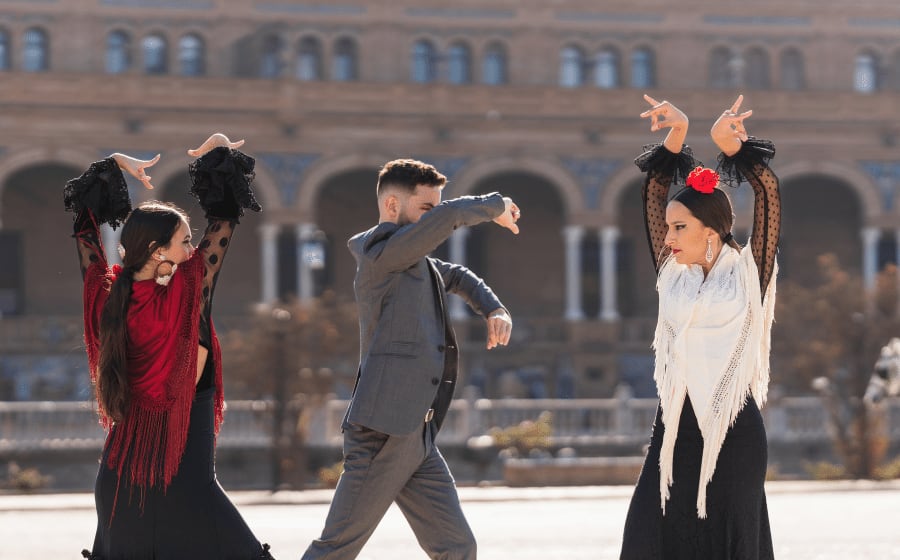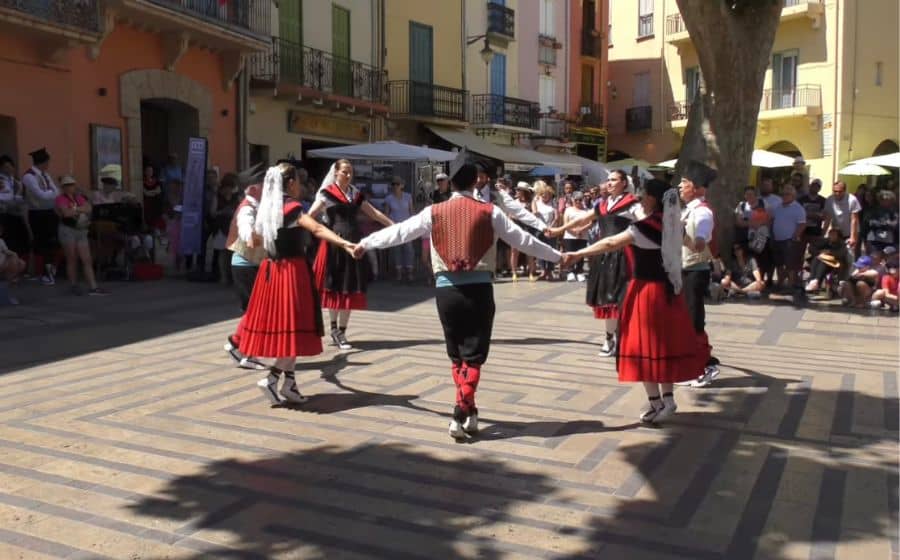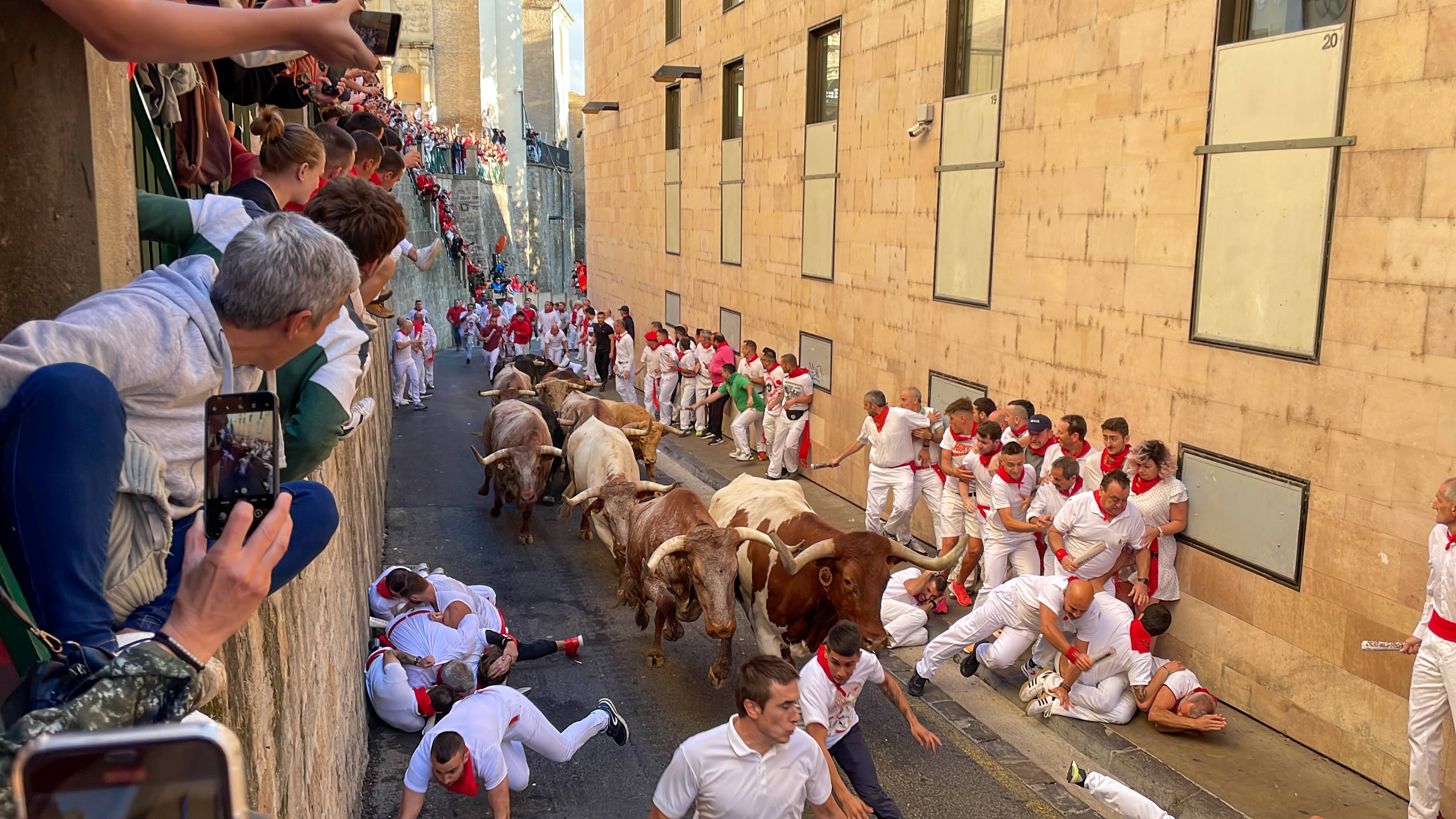The Authentic Carnival in Spain and the 5 Places You Can't Miss
December 14, 2022
Win a FREE Trip to Spain!
Exciting Announcement! For the first time, we're thrilled to offer exclusive trips to the heart of Spain - an experience like no other. This isn't your typical tourist journey; it's a unique opportunity to immerse yourself in authentic Spanish culture, alongside real locals and our passionate team.
But there's more! Simply by requesting information about this amazing trip, you'll be entered into a special draw to win a Fully Paid Trip to Spain for Two. And that's not all - everyone who inquires will receive an exclusive bonus gift, valued at $500, available only now.
Ready to Discover the Real Spain?Click Here ↑ to Request Information & Enter the Draw!
Vibrant colors, music, dances, and costumes of 200 kilos… Carnivals in Spain are one of the oldest celebrations and traditions that still have a lot of presence in Spanish culture.
When we think about Carnivals, people often relate them to Brazil’s Rio de Janeiro Carnival. But, you’ll be surprised to know the ancient history of this festivity started long years ago. Also, some carnivals in Spain are classified as Festivals of International Tourist Interest.
In this article, I’ll explain everything about Carnivals in Spain, what they are about, and most importantly, which are the best cities to experience an authentic one and enjoy a memorable and original weekend!
Since Carnivals hold humor and parody, these dates are ideal for putting all worries aside and letting yourself go with the rhythm and the unique vibe that flies through the air during this celebration.
Table of Contents ▼ ▶
What is the Carnival in Spain?
The Carnival in Spain is an old festive celebration registered since the Middle Ages. Every town in Spain adopted the Carnival. It is known for its colorful costumes, parades, music, and dances, and unique characteristics depending on where you travel.
The Origin of the Carnival in Spain
The Carnival in Spain originated in Cadiz in the 15th century. Merchants from Venice already had a particular tradition of this celebration. During the Lent period, a special celebration was held with masks and costumes that ended up being also imposed in Cadiz, which marked the beginning of its own Carnival in Spain, also one of the most traditional and important in the country.
Some sources place the origin of the Carnival in the Roman Empire since it is related to the “Saturnales,” which are festivities held in honor of the god Saturn. While others claim that the origin is in Greece since they also celebrated similar festivals where Dionysus was venerated, among others.
But, all these festivities had in common the month of February as the time for celebrating it since this time is a transition from winter to spring and in which purification rituals took place. It also coincides with the last days of the winter lethargy of nature since it was believed that the god Saturn walked the earth all winter, and they needed the rituals and offerings to take him to the underworld to begin the summer harvest.
For this reason, with banquets, dances, and dresses with clothes and masks that personified this god, they celebrated the abundance of the earth, leaving obligations and hierarchies aside to establish for a few days and then return to order.
Later, with the expansion of Christianity in the Middle Ages, the festival took the name Carnival, which comes from “carnem levare,” which means “remove meat.” This can also explain why the event was celebrated days before Ash Wednesday, the start date of Lent until Resurrection Sunday. A period of abstinence and fasting. For this reason, the days before a celebration took place where everything was allowed, and people covered their faces or went in disguise to safeguard anonymity.
5 Curiosities about the Carnival in Spain
- Although Carnival is celebrated in February, several cities in Spain have a carnival celebration in the summer months. Such as Puerto de Mazarron and Santiago de la Ribera (in Murcia), Luanco and Cangas de Onis (Asturias), Colmenar Viejo (Madrid), Cadiz, and Monesterio (Badajoz).
- There is a famous carnival in Galicia called Laza. One of the most important characters is Peliqueiro. —A distinctive element of his party—. He has a cowbell on his waist, a mask on his face, and a whip in his hand, and his job is to “protect” all the other carnival characters, so you should NEVER touch Peliqueiro. If you ever spend the festival in Galicia, you should avoid falling into the trap.
- The Carnival queen’s costume is very important. But did you know that one of these costumes weighs an average of 170 kilos? That’s a lot! In 2016 the feathers and rhinestones of Cecilia Navarro’s costume in Tenerife weighed 250 kilos. And if this surprises you, some costumes can weigh up to 500 kilos and need wheels to transport them.
- The celebration of Carnival was forbidden during the Civil War until well into the Franco regime. It was not seen positively since the Carnival was not a massive public manifestation for exalting the figure of the dictator or was linked to religion. And this gave rise to the “Fiestas de Invierno.” It was the same celebration but with a different name since the Spaniards refused to abandon this tradition, and their strategy worked.
- Carnival is often related to Mardi Gras, celebrated in New Orleans, United States. Its name comes from ‘martedí grasso’ (fat Tuesday, in Italian), which refers to the feast celebrated on the last day of Carnival before the abstinence from meat during Lent.
5 Amazing Cities to Celebrate Carnival in Spain
1. Carnival of Cádiz
Cádiz, Andalucia
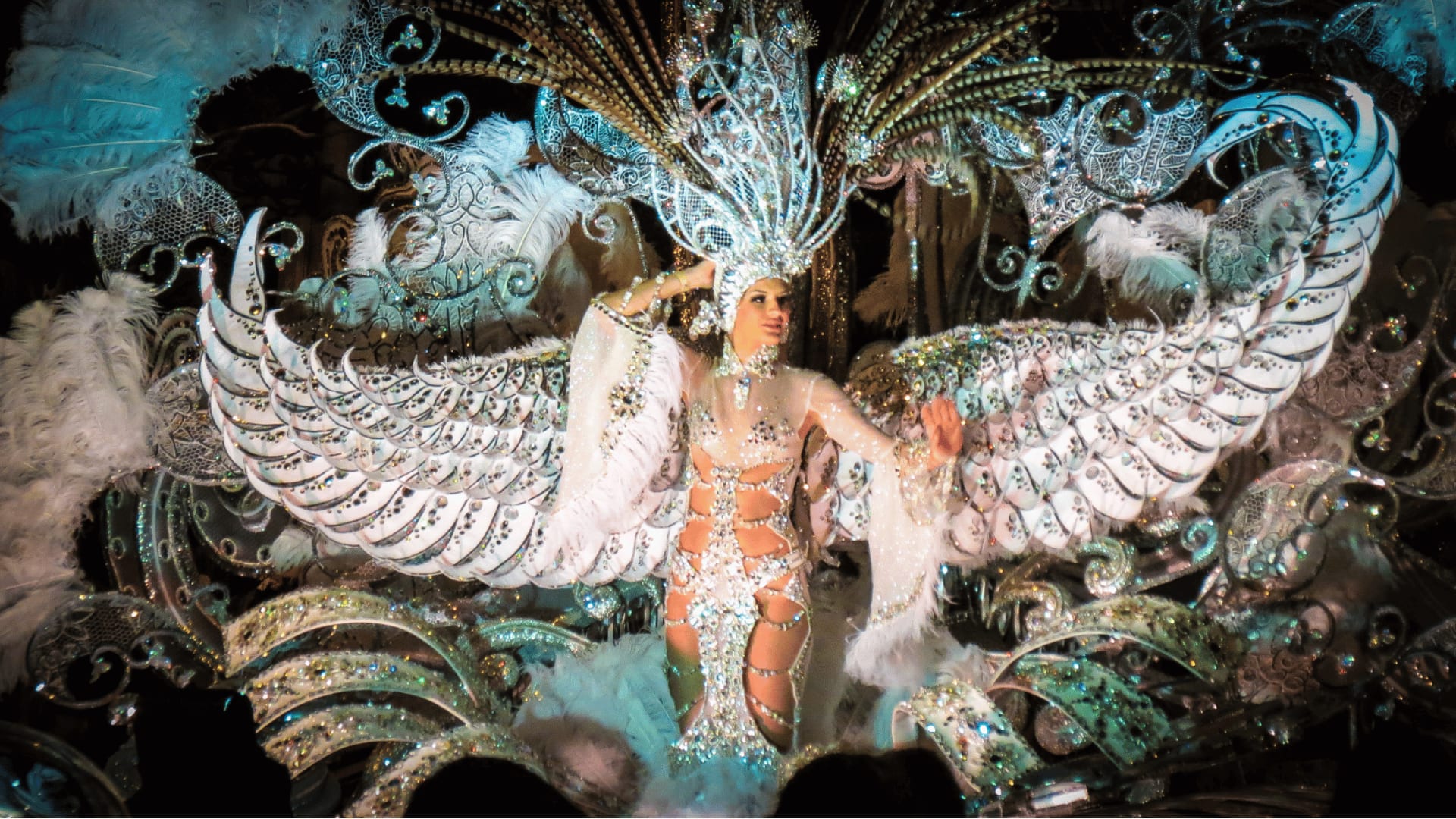
Let’s begin with the city where the Carnival originated in the 15th century. This is also one of the reasons why this special festivity is one of the best carnivals in Spain. It has some iconic events you will not find anywhere else, such as the “chirigotas,” the “comparsas,” or the “murgas.”
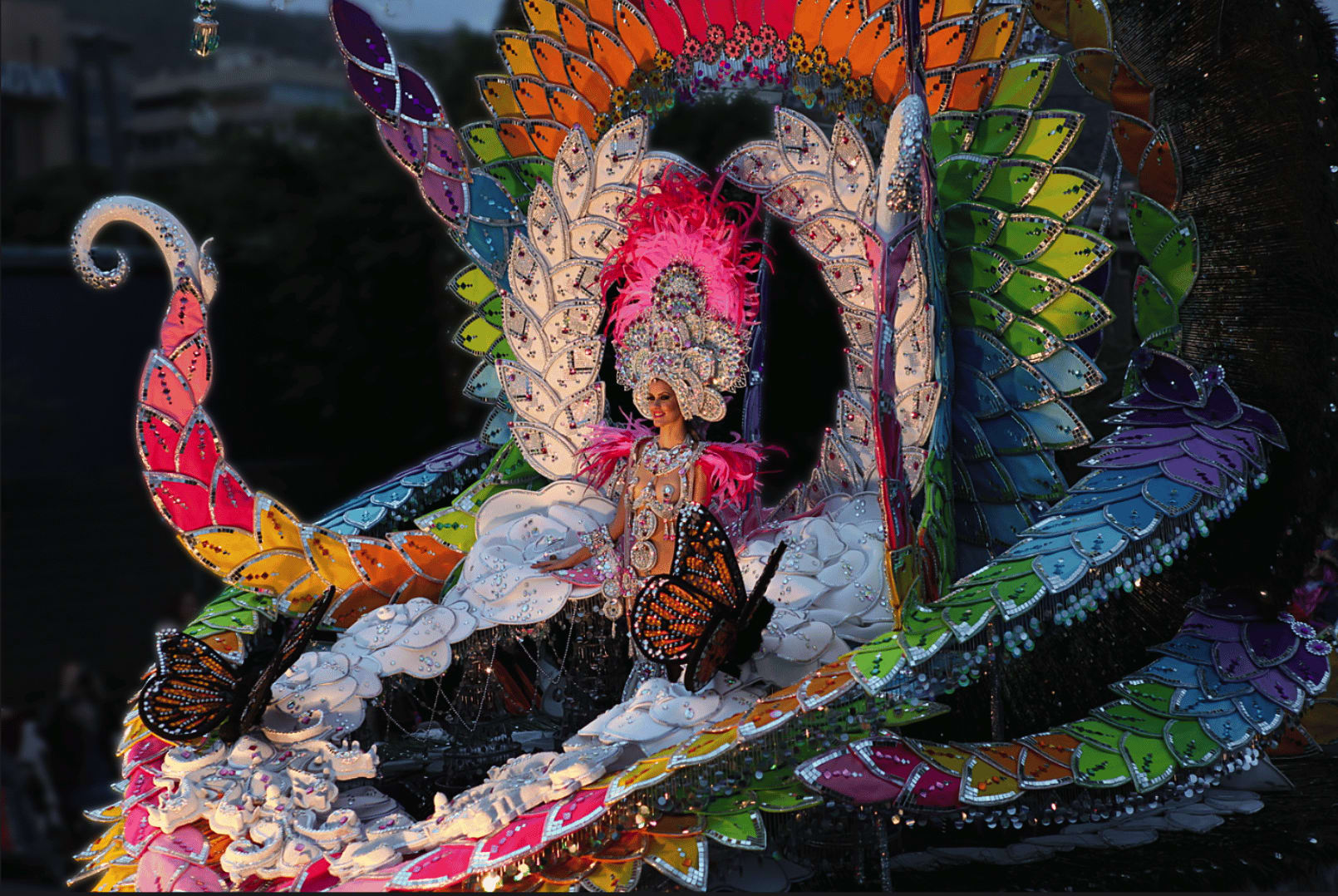
What do all these names refer to? The humorous chirigotas are a satirical genre of Spanish choral folksong that groups sing in the streets. The Comparsas also sing, but their compositions are more demanding and less humorous. And then Murgas is a satirical play whose stories are characterized by social criticism. All this makes the Carnival of Cadiz an experience that you will not be able to live in other areas of Spain.
2. Carnival of Tenerife
Tenerife, Canary Islands
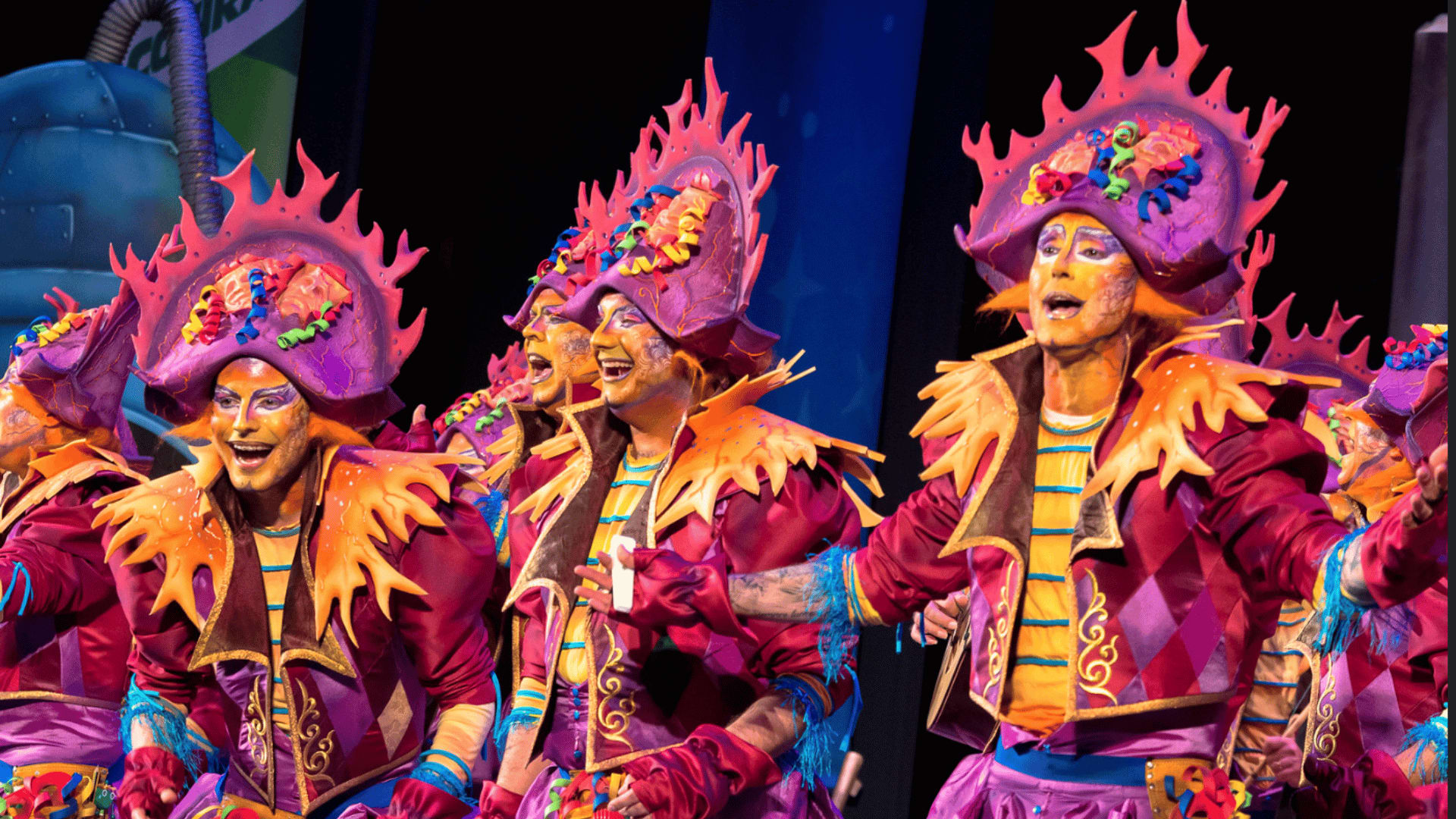
The Carnival of Tenerife takes the crown along with Cadiz for being home to the best Carnivals in Spain. The Carnival of Tenerife is considered the second best in the world, only behind Rio de Janeiro. In fact, it is inspired by the typical Carnival of Brazil, where feathers and color are the protagonists. It is one of the most visited in Spain, and one of the most important events is the gala to elect the Queen of the Carnival of Santa Cruz de Tenerife. Here, the participants wear their most spectacular costumes of incredible fantasies and have to walk in a parade on a stage of 1,200 square meters.

The earliest known reports about this celebration in Tenerife are from the XVII century, and this tradition has been going from generation to generation.
3. Carnival of Sitges
Barcelona, Catalonia
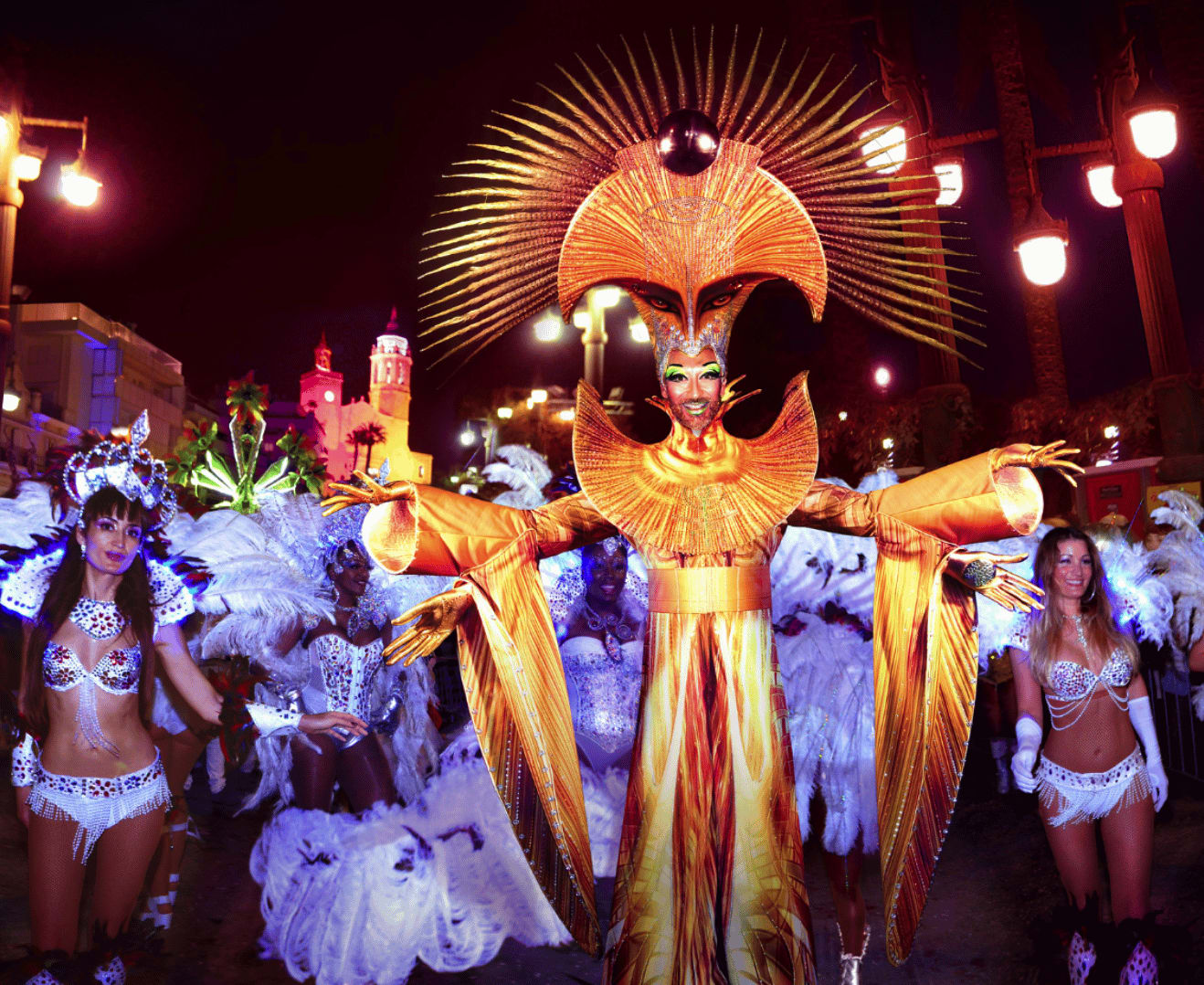
This Carnival is undoubtedly the most important one in Catalonia and one of Spain’s most visited. It’s also a carnival similar to the Brazilian ones, with feathers and lots of colors, but it is also one of the reference events of the LGTBI community.
Sitges is just 40 kilometers from Barcelona and is known for being an inclusive environment, so its carnivals would not be less. The most important event is the Rúa del Exterminio, which is held on the Tuesday of carnival week. As on that day, many carnivals close to this area no longer have essential acts, this parade gains prominence as one of the most visited ones.
Every year the city welcomes almost a quarter of a million visitors of all nationalities who fill the streets eager for fun and uninhibited fun.
4. Carnival of Aguilas
Murcia
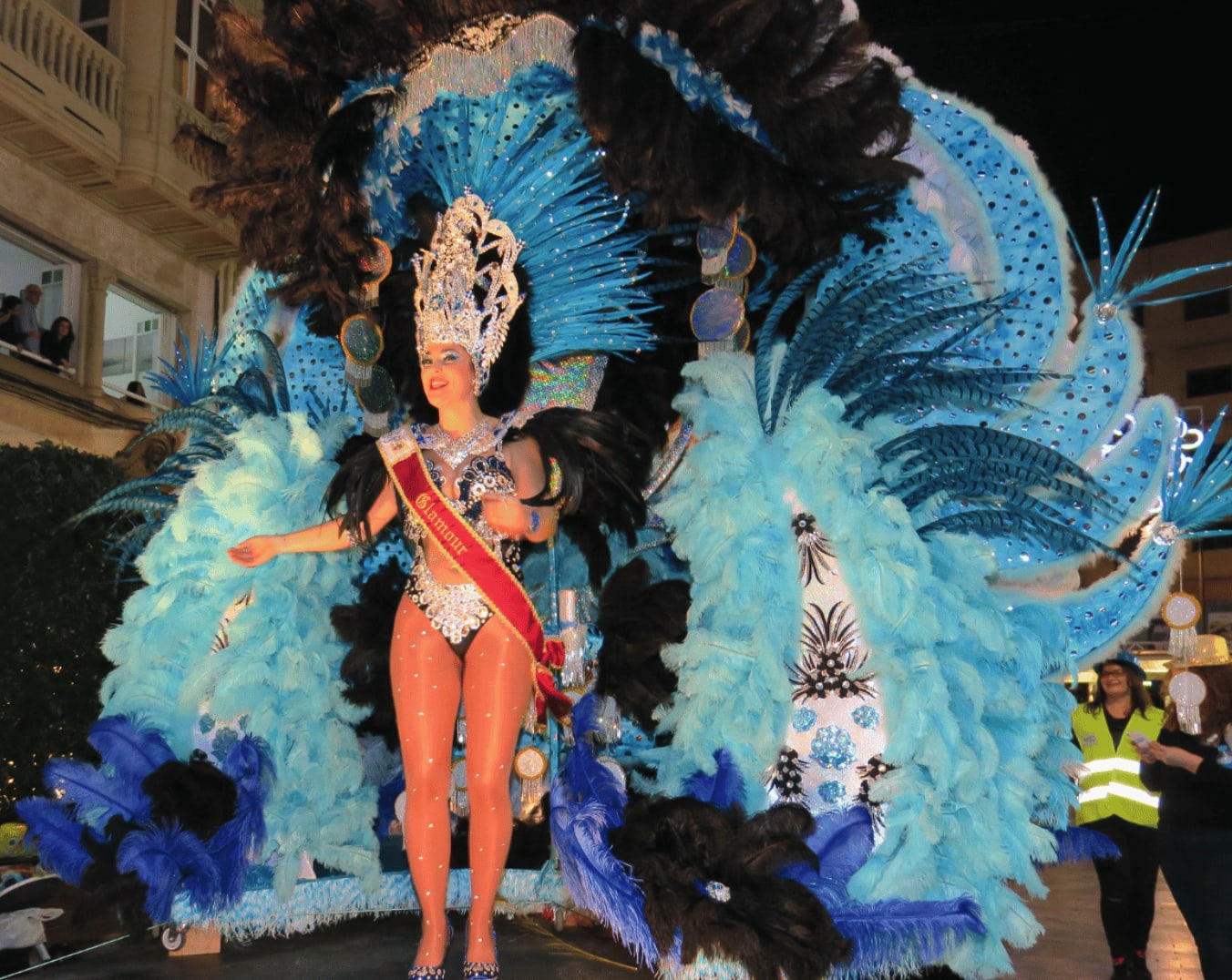
This Carnival is one of the most emblematic carnivals of the Region of Murcia and one of the most famous in Spain. The Águilas Carnival is full of exciting events and activities. Parades, music, fireworks, open-air dances, games, and contests. The caravans here are the most important and incredible thing people like to see, and there is even a large children’s parade as well.
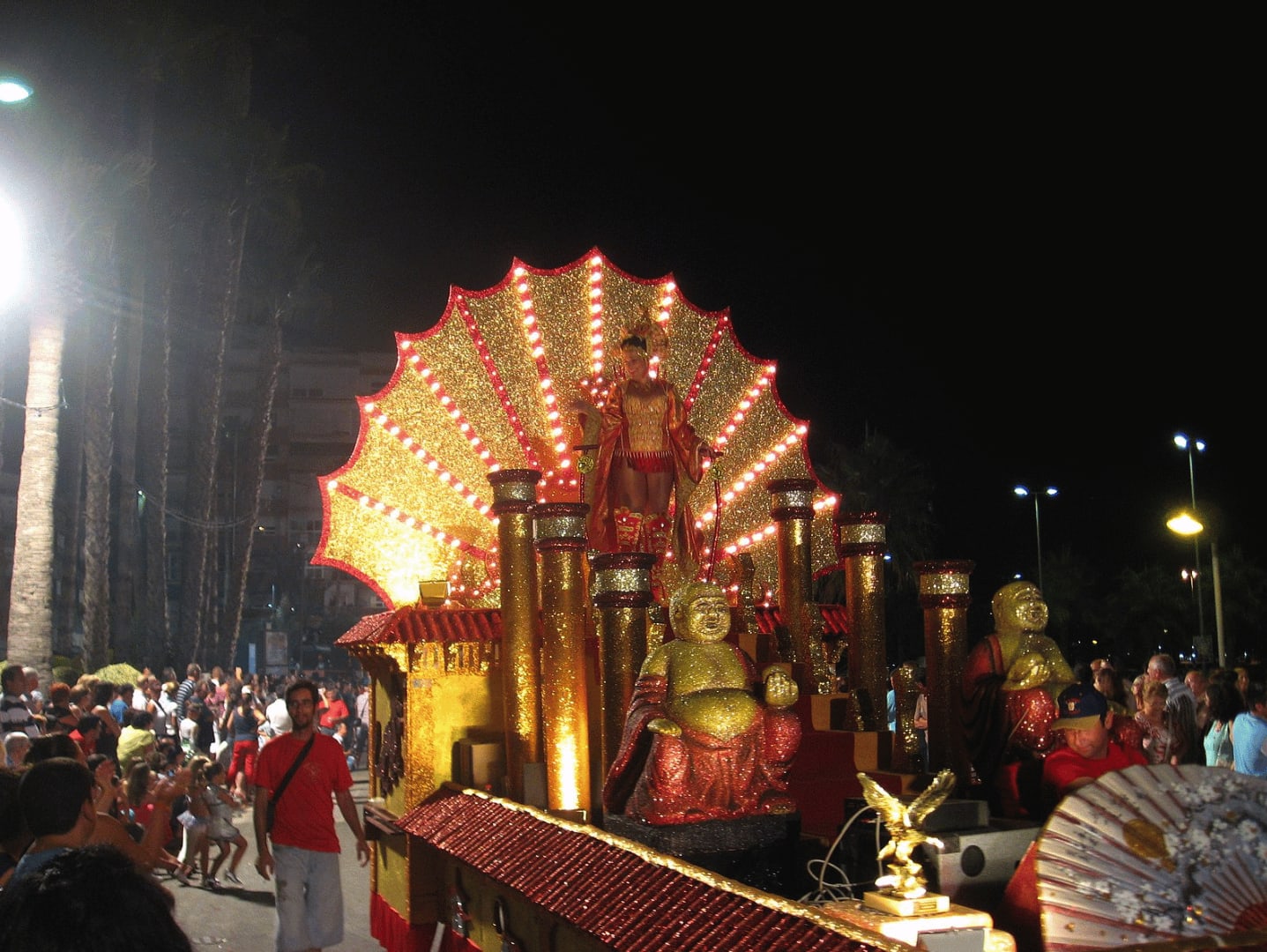
The Carnival dates back to the 19th century, and the first images of this Carnival are from 1903. Some historical sources date the Carnival of Águilas to the 18th century, during the reign of Carlos III. Due to the Civil War and Franco’s dictatorship, The Águilas carnival didn’t go through a reasonable period, as it was banned. However, some Aguileños dared to wear their best costumes and used to go around the streets, tricking people, for example, by simulating a wedding.
5. Carnival of Xinzo de Limia
Ourense, Galicia
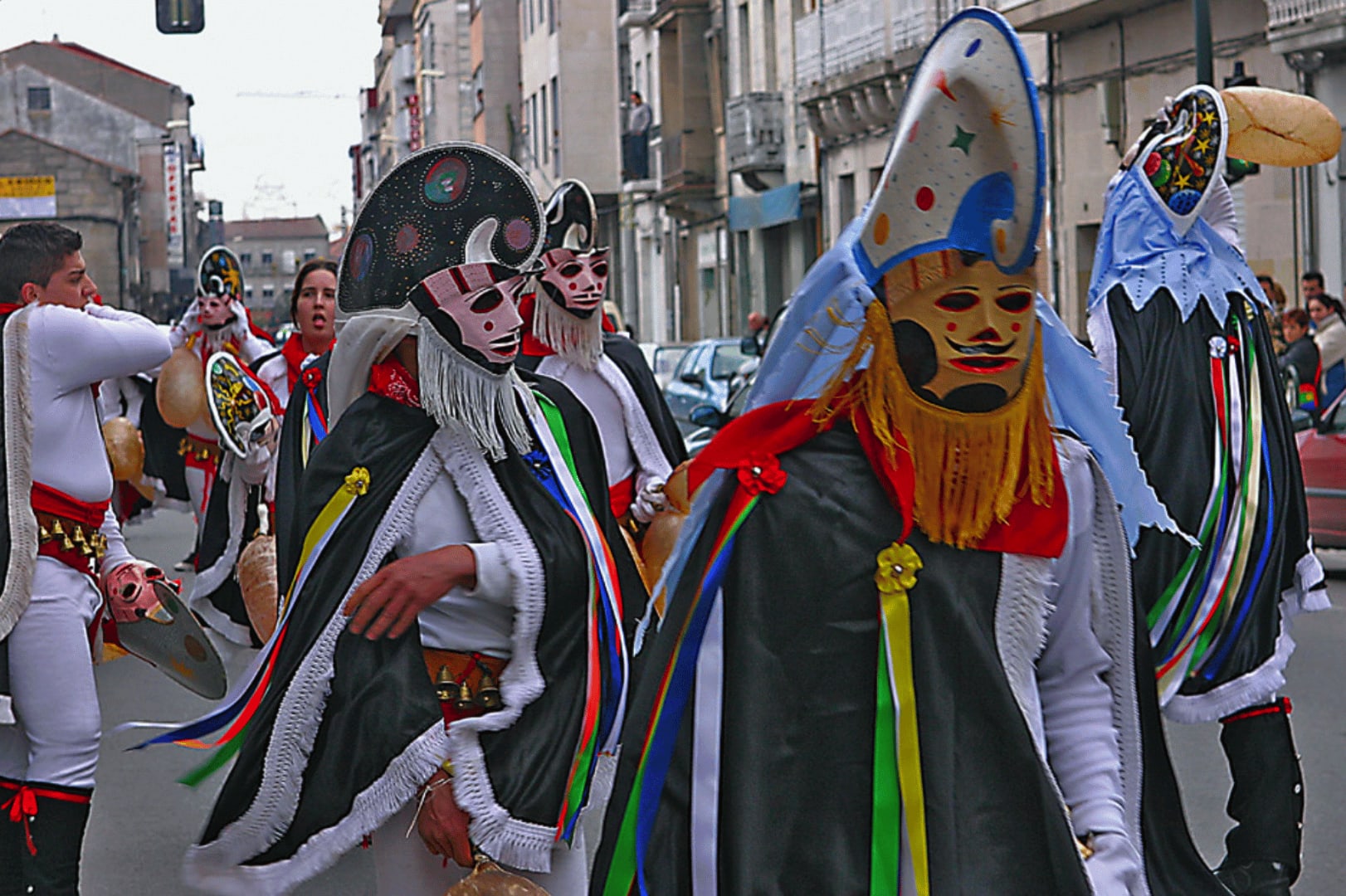
The Carnival of Xinzo de Limia in Galicia is the Carnival that lasts the longest in Spain. The events begin 3 Sundays before, with the Domingo Fareleiro, when they hold a flour battle. Isn’t this very interesting? The following Sunday is celebrated with the Domingo Oleiro, where groups pass pots full of water to each other until they fall to the ground. Finally, on Corredoiro Sunday the next week, the typical carnival troupes begin to invade the streets. The central figures of these carnivals are the Pantallas, characters dressed with curious masks and a belt of bells that encourage people to dress up and have a good time. This Carnival is the perfect opportunity to visit an uncrowded and charming destination. I can promise you that you will not get bored and will have a great time.
Go big or go home! Carnivals are a huge thing, and Spaniards know how to party! As you can see, this tradition is still celebrated yearly, and this remarkable experience is forever remembered and engraved in Spanish people’s hearts. I suggest you come and see it for yourself!



